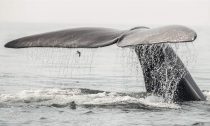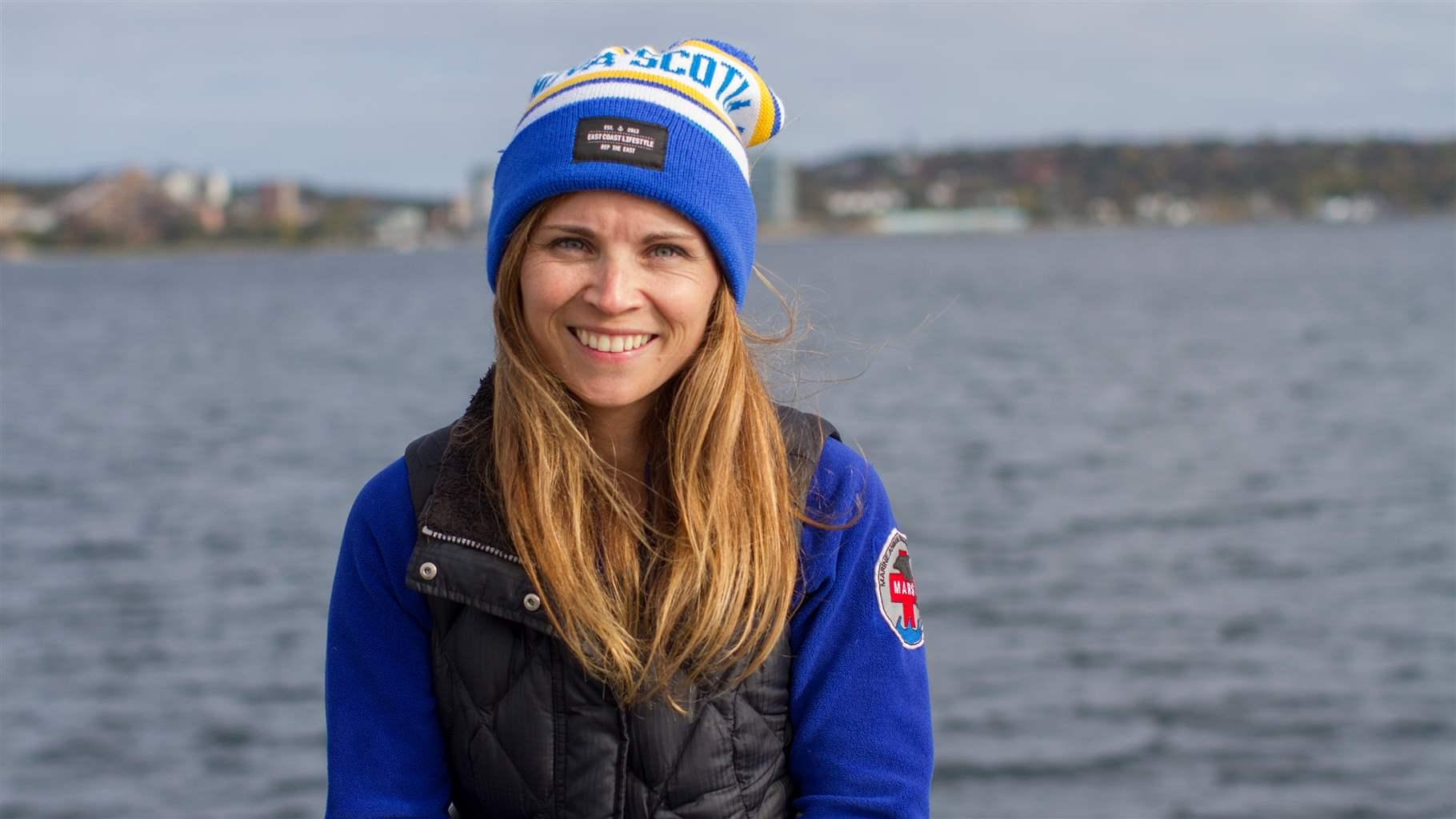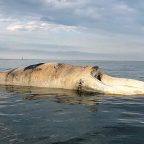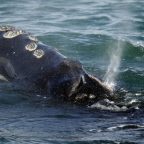
During 2020, no North Atlantic right whales were observed to have died off Canada’s coast, but this endangered species’ overall population numbers are still down by 11 percent over the past decade. For the last several years, Canada has changed fisheries management to protect right whales by halting fishing if whales are present and introducing ropeless technologies—fishing gear that doesn’t snare whales accidentally—in an effort to save right whales and increase their chance of survival in Canadian waters.
Peter Baker, director of The Pew Charitable Trusts’ Northern Oceans Conservation project, spoke with Tonya Wimmer, executive director of the Marine Animal Response Society in Nova Scotia, who works for the conservation of marine species through education, research, and response to incidents involving dead and distressed marine animals. This interview has been edited for clarity and length.
Q: Do you think the recent efforts that the Canadian government has taken—such as closing fisheries when whales are in the area—are making a difference?
A: Most definitely. Reducing the amount of fishing in an area, and reducing vessel traffic and the noise that it creates, are putting us on the right path to help these animals.
The question now is “How do we do it on such a dynamic level because the animals themselves are dynamic?”
Q: What do you mean when you say the whales themselves “are dynamic”?
They don’t just go to one spot and stay there. They’re moving around, they’re reacting to food, they’re reacting to weather. And so that’s the hard part; that’s a challenge for us.
Q: Could you describe how the response to marine mammal incidents is connected to critical conservation research?
A: We learn most of what’s happening to these animals through necropsies, which tell us the cause of death or extent of harm and disease. That’s also where we learn an awful lot about their biology and ecology. If people hadn’t tried to figure out early on why North Atlantic right whales were dying, we wouldn’t have known to look at entanglement, fishing gear, and vessel strikes.

Q: During your career, have you noticed a difference year-to-year in the number of right whale deaths? The number of injuries? The kind of injuries?
A: Over the years, there’s been an increase in the number of deaths due to entanglements and vessel strikes, especially in Canada. Many of the animals are also in very poor condition, which is troubling for their overall health and ability to reproduce. The deaths and poor health conditions are a result of right whales living along the United States and Canadian coastlines, where their entire migration route is filled with some of the busiest ports and fishing grounds on the planet. One of the things of greatest concern is that we’re seeing more females dying and calves hurt. Likely this is related to their use of these coastal areas as well as a female’s significant investment in carrying, feeding, and protecting a calf. So not only do their migration routes put them in dangerous locations, but they’re also already in more precarious health due to their significant energy investment in pregnancy.
Think about the way an animal lives in a city: It’s constantly dodging obstacles while trying to find food, mate, and stay safe from predators. It’s like an urban jungle; it’s so complex and filled with many hazards. It’s a similar situation for the North Atlantic right whale, which lives in a kind of jungle of threats while it goes about its ordinary life.
Q: With the challenges you’ve mentioned, do you find reason to be hopeful?
A: Definitely. Since 2017, a lot of good work has been done for the species and to mitigate threats. But it’s a species with only 70 females of reproductive age and a population in decline. So how do you do enough, and fast enough, to counteract decades of high mortality and low birth rates? How does the species recover from such a critically endangered status?
Q: What else needs to be done?
A: It’s a very tricky question. The whales are still dying, and they’re still being hurt. There’s been a lot of collaboration among fishermen, researchers, industry, and government to both understand the animal and to understand fisheries, and to try to figure out what kind of management plans and what kind of mitigation measures can be put in place—but we know we need to do more.
It’s also an incredibly complex question because the whales move around, and we don’t understand everywhere they go—how they use their habitat, and why in one year they mostly seemed clumped in one location, and the next year they’re clumped in another location.
Q: You mentioned collaboration among fishermen, researchers, industry, and government. Is that helping?
A: It’s absolutely helping. But we need better transparency from our governments with the data that’s being collected: It needs to be shared more broadly, and in a timely manner, so that many people can be looking at this issue and be able to ask the right questions. Currently, you have to ask all of the individual lead scientists from each cruise to get their data.
Q: What’s a way forward?
A: While we’re seeing so much work, innovation, research and collaboration, the whales are still dying, and they’re still being hurt. So we need to really start looking at this from a much more holistic perspective, particularly to consider not just whale deaths but circumstances that affect their overall health in ways that may not kill them but that significantly weaken them. We have to stop reacting to catastrophes; we have to start preventing catastrophes.














Social Profiles